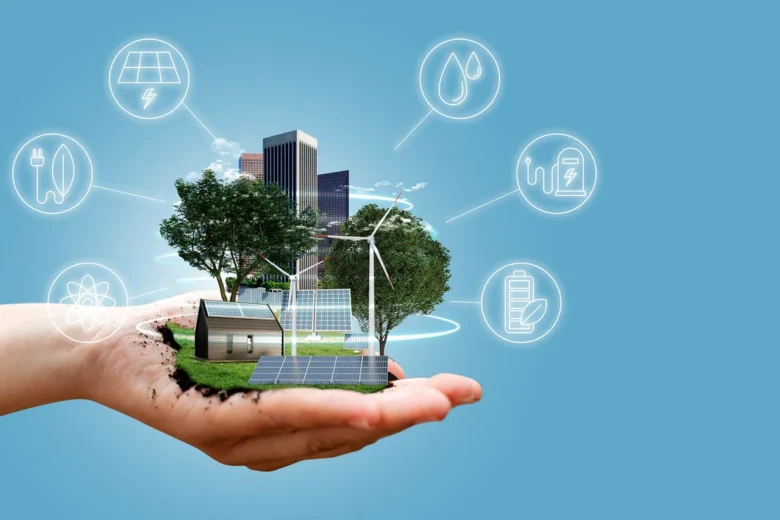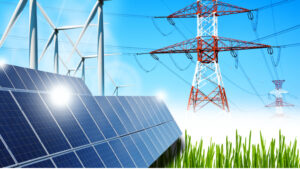The Rise of Solar Shades for Energy Efficiency and Aesthetics
Solar panels have long been criticized for being bulky and unsightly, especially on residential roofs. Solar shading, however, captures energy more efficiently without sacrificing aesthetics. These ultra-thin, customizable panels can blend seamlessly with roof tiles or building materials and still generate significant energy. The design flexibility of solar shading allows homes and businesses to use renewable energy without sacrificing aesthetics. This breakthrough increases the accessibility of solar technology and expands its use to cities and buildings where aesthetics are important. As solar shading becomes more affordable and efficient, it has the potential to make solar the default energy choice for buildings around the world.
Floating Solar Farms Revolutionizing Water and Energy Management
Floating solar farms are another clean energy breakthrough that is changing the world. Instead of taking up land, these floating panels are installed on lakes, reservoirs, and wastewater treatment plants. Floating solar farms can reduce water evaporation, increase panel efficiency through water cooling, and generate large amounts of clean electricity without competing with agricultural land or urban sprawl. China, Japan, and India have successfully used multifunctional water surfaces to combat energy shortages. In densely populated or land-scarce areas, floating solar farms will help conserve water and energy as climate change accelerates.
Bladeless Wind Turbines for Quiet Energy Generation
Traditional wind turbines are efficient but cause noise pollution, bird nuisance, and maintenance costs. Wind Energy’s bladeless wind turbines are revolutionary. These devices generate electricity by spinning the blades instead of rotating them, reducing noise and visual disturbance. Their bladeless design benefits homes, cities, and other places where traditional turbines cannot operate. The invention reduces maintenance costs by reducing moving parts. The development of bladeless wind turbines could make wind energy accessible to more people and enable small-scale off-grid energy generation. Wind energy is being reimagined to support cleaner, quieter, more sustainable infrastructure.
New Batteries Store Clean Energy Reliably
Energy storage is essential for a sustainable energy future. We need efficient energy storage technology to ensure 24/7 power, as solar and wind are intermittent sources. Recent advances in batteries, particularly solid-state and flow batteries, could revolutionize energy storage technology. These batteries offer higher energy density, faster charging, longer life, and improved safety than lithium-ion batteries. Research into abundant materials such as sodium and zinc is making clean energy storage more sustainable and less reliant on rare earth metals. Next-generation batteries are being used in homes, electric vehicles, and large-scale grids to improve the reliability of renewable energy. As energy storage technology advances, one of the last remaining barriers to renewable energy adoption will be broken.
Hydrogen Fuel Cells Help Green Transportation
Hydrogen fuel cells have long been touted as a potential way to reduce carbon emissions in heavy-duty transportation, aviation, and industry, where electrification is more difficult. Recent advances have made hydrogen production and use cleaner and more efficient. A zero-emissions alternative fuel is green hydrogen, which is produced by splitting water molecules using renewable energy. Buses, trucks, trains, and even airplanes use fuel cell technology to quickly refuel hydrogen over long distances without greenhouse gas emissions. Governments and private companies are investing heavily in hydrogen pipelines and refueling stations. As these systems develop, hydrogen fuel cells will help decarbonize transportation and maintain a clean energy ecosystem. Its environmental benefits and scalability make hydrogen a key innovation for sustainable development.
Smart Grids and AI-Driven Energy Management
The future of clean energy depends on its production, distribution, and consumption. Smart grids that use artificial intelligence and data analytics are transforming electricity management. Intelligent systems can optimize electricity flow, monitor energy consumption in real time, and predict usage patterns, reducing waste and costs. Solar, wind, and traditional electricity can be integrated into smart grids while maintaining stability and reliability. Such an approach gives users more control over their energy and reduces energy bills. AI-driven energy management helps cities and countries build more resilient and responsive energy infrastructures. These grids enable homes and businesses to generate electricity and deliver it back to users. Smart grids create a cleaner, smarter society by making the energy ecosystem more flexible and efficient.
Bioenergy from Waste as a Circular Energy Solution
Waste-to-energy is another clean invention that solves global energy and waste management problems. Bioenergy methods convert food waste, agricultural waste, and sewage into biogas, bioethanol, and biodiesel. These methods reduce landfill use and methane emissions and generate renewable energy. Modern biorefineries can produce clean electricity, heat, and advanced transportation fuels. Bioenergy systems can also help rural and developing regions achieve economic and sustainable development by converting waste into energy. The efficiency and scalability of bioenergy are improving as the technology develops, making it essential to the circular economy. This innovation shows that rethinking and repurposing everyday waste can lead to sustainable energy solutions.
Conclusion
Sustainable energy technologies are changing the way we power the world, and innovation is leading the way. From sleek solar panels and floating solar panels to bladeless wind turbines and hydrogen-powered transportation, each solution solves a unique problem while helping us transition away from fossil fuels. Future batteries and AI-driven smart grids enable efficient, sustainable energy production, storage, and distribution. Waste-to-energy technologies show how we can turn environmental problems into resources. These seven technologies are critical shifts that offer hope for the global fight against climate change. As governments, businesses, and individuals embrace these innovations, a cleaner, greener planet becomes possible.
FAQs
1. Which clean energy source is the most efficient?
The most popular and cost-effective are solar and wind. New technologies such as solid-state batteries and renewable hydrogen are expected to improve system efficiency.
2. Can these developments work globally?
Most innovations are applicable in different environments. Floating solar farms are suitable for areas with limited land, while bioenergy systems are well-suited for rural areas with more organic waste.
3. How can individuals promote clean energy?
People can promote clean energy by installing solar panels, using energy-efficient appliances, supporting clean energy policies, and choosing green energy providers.
4. What is the role of government in promoting clean energy innovation?
Government funding, research, infrastructure, and policy frameworks promote the adoption and scalability of renewable energy technologies.
5. Can these innovations prevent climate change?
No single innovation can solve climate change, but these clean energy developments are essential for reducing carbon emissions and achieving the Sustainable Development Goals.



